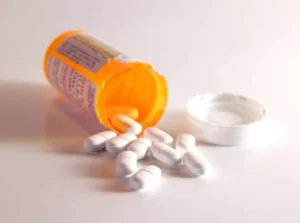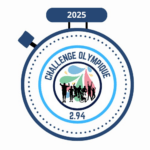Driving Drunk or High Puts Everyone in Danger

An estimated 20 percent of adults in the U.S. drink alcohol to help them fall asleep. However, alcohol use has a direct, adverse effect on a person’s sleep quality. Alcohol addiction can lead to several long-term sleep problems, including insomnia.
Serving Jail Time
This work was supported by the National Institute on Alcohol Abuse and Alcoholism of the National Institutes of Health [Award Number K01AA026645]. The content is solely the responsibility of the authors and does not necessarily represent the official views of NIAAA or the NIH. When someone sees their parents or older relatives repeatedly drive under the influence, they may be more likely to do it as well (9). WHO, in collaboration with international partners, launched the SAFER initiative towards a world free from alcohol related harm in 2018.
Who is affected
- It’s pretty common for people to experience depression and anxiety after a first-time DUI.
- In 2022, 5,934 people operating a motorcycle were killed in traffic crashes.
- Submit your number and receive a free call today from a treatment provider.
Federal regulation constitutes a DWI as driving with a BAC level of 0.08% or higher. A motor vehicle may include car, truck, bicycle, golf cart, snowmobile and jet skis. Each state has its own laws surrounding DWI convictions such as the fines involved, jail time and possible revoked or suspended license.
Treatment and Rehabilitation for Alcohol Dependency

Alcohol, no matter how much or how little, can influence your concentration. With driving, there are many things that require your undivided concentration such as staying in your consequences of driving drunk include: lane, your speed, other cars on the road and traffic signals. Your attention span is dramatically reduced with drinking, which significantly increases the chance of an accident.
- Persons who serve alcoholic beverages are also stakeholders to the extent that they should be responsible for not serving excess alcohol to drivers.
- The effects of alcohol abuse vary greatly, putting you at risk for causing an accident or highway injury.
- Once your BAC is at .05%, you’ll have a slower response to emergency situations behind the wheel.
- NHTSA strongly supports the expansion of ignition interlocks as a proven technology that keeps drunk drivers from getting behind the wheel.
- This can increase the risk of rash behavior and reactive aggression.
However, during holiday periods the frequency of enforcement and the visibility of media campaigns can be increased. Persons who serve alcoholic beverages are also stakeholders to the extent that they should be responsible for not serving excess alcohol to drivers. The key stakeholders for reducing drink–driving accidents are the police; they are responsible for enforcing drink–driving laws and for generally stepping up drink–driving countermeasures. Young people between the ages of 21 to 25 years old are the most likely to drive drunk.
Support Groups
If you are charged with underage drinking and operating a motor vehicle, you could face severe legal penalties. Alcohol and driving is a dangerous and frequently deadly combination. About one-third of fatal car crashes in the United States in 2019 involved drunk drivers. Every day, 29 people in the U.S. die in an alcohol-related car crash, equaling one preventable death every 50 minutes. Clear vision is essential for drivers, but excessive alcohol consumption can impair visual acuity. Drinking can cause blurred vision and, in some cases, uncontrolled eye movements.


To reduce socially desirable responding of sensitive behaviors, the interview was carried out using computer-assisted interviewing methodology as a confidential means of reporting. From the 2002–2017 NSDUH data, the present study included an analytic sample of 615,882 adults aged 18 or above (286,562 men and 329,320 women). More detailed descriptions of the NSDUH are available elsewhere (Center for Behavioral Health Statistics and Quality, 2018). In a small study that interviewed 72 young adults across Montana about reasons for drinking and driving, participants cite a lack of transportation options (9).

In all states, your sentence will include the loss of driving privileges for a period of time, even for a first-time DUI conviction. Some states offer a hardship license that allows you to drive to work or school during the time your license is revoked or suspended, but your driving privileges will still be drastically curtailed. It’s pretty common for people to experience depression and anxiety after a first-time DUI. But getting a DUI may result in a host of emotions—including sadness, anger, guilt, and shame. Here we take a look at what happens when you get a DUI and what you need to know to ensure you get the help you need.
Combined effects of alcohol and distraction on driving performance
To reduce alcohol-related fatal crashes among youth, all states have adopted a minimum legal drinking age of 21. NHTSA estimates that minimum-drinking-age laws have saved 31,959 lives from 1975 to 2017. As alcohol levels rise in a person’s system, the negative effects on the central nervous system increase. Alcohol is absorbed directly through the walls of the stomach and small intestine.


 ci-dessous, en bas de votre écran, et puis sur Ajouter à l'écran d'accueil.
ci-dessous, en bas de votre écran, et puis sur Ajouter à l'écran d'accueil.
 ci-dessus en haut de votre écran, et puis sur Installer l'application.
ci-dessus en haut de votre écran, et puis sur Installer l'application.